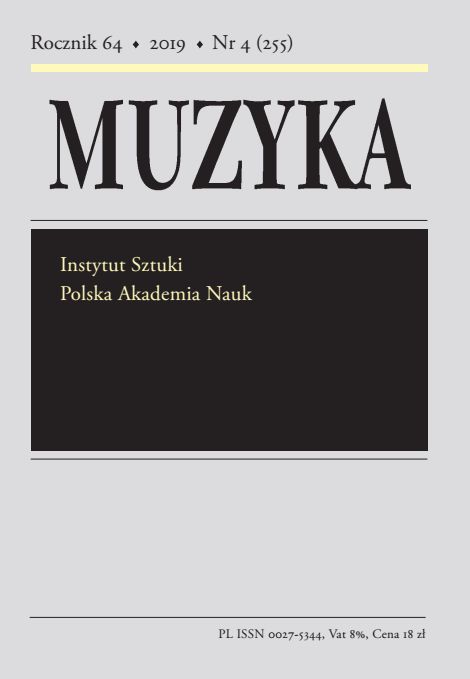O historii paryskich inscenizacji Pierścienia Nibelunga (1893–1933)
On Wagnerian Ring cycle Parisian historical performances (1893–1933)
Author(s): Michał Piotr MrozowickiSubject(s): Theatre, Dance, Performing Arts, Music
Published by: Instytut Sztuki Polskiej Akademii Nauk
Keywords: Wagner reception in France; Der Ring des Nibelungen;history of opera;
Summary/Abstract: Only a few weeks after the world Wagner’s Ring cycle premiere in Bayreuth in August 1876, the great French conductor Jules Pasdeloup, decided to include to the programme of his dominical Parisian concerts the first, short but famous, fragment of this masterpiece: Siegfried’s Funeral March from The Twilight of the Gods. He had to face hostile reactions of some spectators who, during its execution, acted like the audience of Tannhäuser’s premiere fifteen years before, using their whistles to express their negative attitude to the German composer. Nevertheless numerous other pieces taken from The Ring of the Nibelung were going to be performed by Pasdeloup and his musicians as well as by his colleagues Edouard Colonne and Charles Lamoureux in the following years. However the full four parts of the cycle appeared on the stage of The Palais Garnier much later and in unusual order. The Valkyrie was performed on 12 May 1893 conducted by Colonne. Siegfried with the Polish famous tenor Jan Reszke in the title role had its premiere in Paris on 3 January 1902 conducted by Paul Taffanel and it was the last Wagner’s musical drama introduced to Palais Garnier’s repertoire during Pedro Gailhard’s directorship. His successors, Leimistin Broussan – who had previously presented The Ring cycle at Lyon’s Grand Theatre in April 1904 – and the composer André Messager, the great admirer and connoisseur of Wagner’s dramas, put on The Twilight of the Gods in 1908 and The Rhinegold next year, followed soon by the four full cycles of the Wagnerian Tetralogy conducted by Austrian conductors Felix Weingartner (in 1911 and in 1912) and Arthur Nikisch (in 1911) and finally by the co-director of the Paris Opera, André Messager. The paper recalls these historical performances, as well as few other performances of the Tetralogy (or its parts) that took place in the following years, especially in 1928, 1929 and 1933. Concluding the paper written on the eve of the new creation of the Tetralogy at the Opera Bastille (directed by Calixto Bieito, the Spanish artist well known for his controversial opera productions), the author reminds briefly the post-war Parisian productions of the Tetralogy at the Palais Garnier and at the Opera Bastille, as well as these at the Théâtre du Châtelet and at the Théâtre des Champs-Elysées.
Journal: Muzyka
- Issue Year: 64/2019
- Issue No: 4
- Page Range: 65-110
- Page Count: 46
- Language: Polish

